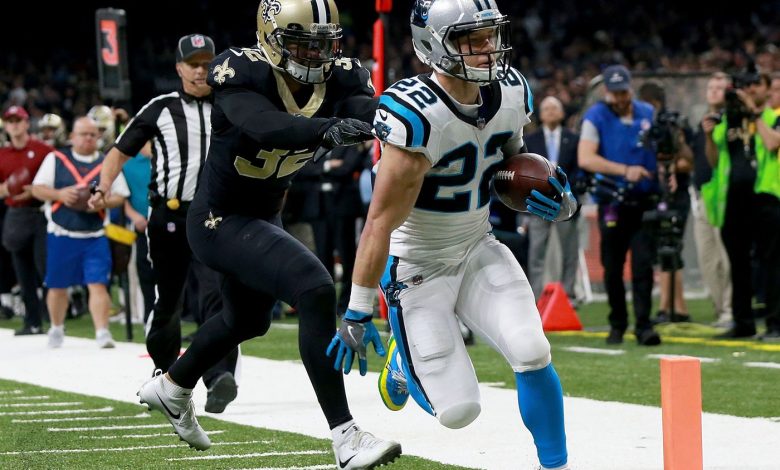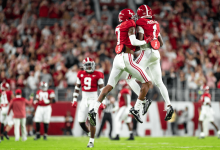arguing for selecting a running back in the first three rounds of the draft

In today’s NFL, the running back position has often been devalued in favor of passing offenses and multi-faceted quarterbacks. The argument against selecting a running back in the first few rounds of the NFL Draft is a popular one, rooted in the short shelf life of the position and the perceived inefficiency of investing high draft capital in players who may not be game-changers in the modern, pass-heavy league. However, there are compelling reasons why a team should consider selecting a running back in the first three rounds of the NFL Draft, especially when that player can provide a unique skill set or offer the potential to change the course of a franchise’s offensive future.
In this article, we will explore the multiple reasons why selecting a running back early in the draft can be a wise and impactful choice for an NFL team. Whether it’s due to the role of running backs in today’s game, the potential value of top-tier talent at the position, or the impact that a dynamic running back can have on an offense, selecting a running back in the early rounds should not be ruled out as a viable strategy for success.
1. Elite Running Back Talent Can Be a Difference-Maker
While it’s true that running backs are no longer seen as the focal point of most NFL offenses, the best running backs still hold the potential to transform a team’s attack. Running backs like Saquon Barkley, Christian McCaffrey, Derrick Henry, and Nick Chubb have proven that an elite player at the position can be an unstoppable force, even in today’s pass-heavy NFL. Selecting a running back in the first three rounds allows a team to secure one of these top-tier athletes, who can provide a distinct advantage.
An elite running back is a versatile player who not only contributes in the running game but also in the passing game. McCaffrey and Barkley, for example, are not just power runners; they are dynamic weapons out of the backfield, able to catch passes and make big plays in space. A player who can contribute to all phases of the game, including pass protection and receiving, is a rare commodity. Teams with such a running back force opposing defenses to account for more variables, opening up play-action and making the offense much harder to defend.
In many cases, an elite running back can carry a team on his back, making a difference in both regular-season games and crucial playoff matchups. The right running back adds an element of unpredictability to an offense, keeping defensive coordinators up at night trying to figure out how to contain him. The top-tier running back prospects in any given draft class are often ready to make an immediate impact, contributing to the team’s success from day one.
2. Adding Balance to an Offense
In the modern NFL, passing offenses reign supreme, but a well-balanced attack that incorporates both the run and pass is incredibly effective. Offensive balance is a key to success in the NFL, and having a talented running back who can complement an effective passing game is a huge asset.
Selecting a running back in the early rounds allows a team to create an offense that can strike from multiple angles, forcing opposing defenses to play a more disciplined and unpredictable game. Running backs can do more than just pound the ball between the tackles—they can set up play-action passes, keep the defense honest, and wear down the opposition as the game progresses.
Teams that rely too heavily on their passing attack risk becoming one-dimensional, making them easier to defend. A running back taken in the early rounds of the draft can help prevent that, providing a reliable option in the backfield who forces defenses to respect both the run and pass. A strong running back creates better opportunities for the quarterback, as linebackers and safeties are less likely to crowd the line of scrimmage when they know the run game can be a legitimate threat.
Moreover, having a dynamic running back on the roster helps prevent the team from becoming too predictable, which can happen if a team focuses entirely on passing. A versatile running back can break through defensive fronts and turn what looks like a modest run into a big gain, setting up the rest of the offense to capitalize.
3. Running Backs in the First Three Rounds Have a Higher Probability of Immediate Impact
One of the main reasons to select a running back early in the draft is the likelihood of an immediate impact. While it’s true that rookie wide receivers or even quarterbacks may take time to adjust to the NFL, running backs can often hit the ground running. Unlike some other positions, the transition from college to the pros is often smoother for running backs, especially those with elite talent.
Running backs typically don’t require as much development as other positions, like quarterbacks or offensive linemen. They don’t have to learn complex playbooks or adjust to a new style of play as much as a quarterback might. A talented running back can adapt quickly to the speed and physicality of the NFL and make an impact in his rookie season.
As a result, a team selecting a running back in the first three rounds has the potential to see immediate returns. A top-tier running back can come in and contribute right away, giving the team an immediate boost to both the ground game and the passing attack. This is particularly crucial for teams that are on the brink of contention but need a few more pieces to put them over the top.
Furthermore, when a team has a young, dynamic running back, they can build their offense around him for years to come. Running backs often play some of their best football in the early years of their careers, meaning selecting a talent early in the draft can yield immediate results.
4. The Evolving Role of Running Backs in the Passing Game
The landscape of the NFL has changed dramatically over the years. While running backs used to be valued primarily for their ability to carry the ball between the tackles, today’s running backs have become multifaceted weapons. The rise of the pass-catching running back has transformed how offenses utilize their backfield talent.
Players like McCaffrey, Alvin Kamara, and Ezekiel Elliott are prime examples of running backs who can contribute significantly to the passing game. The NFL has evolved into a passing league, but having a running back who can also serve as a receiving threat gives teams a crucial advantage. A running back who can line up as a receiver, run routes out of the backfield, and catch passes with ease adds an extra dimension to an offense that is difficult to defend.
The ability to catch passes out of the backfield creates matchup nightmares for defenses. Linebackers are often too slow to cover running backs in the open field, and defensive backs are typically too small and outmatched physically. A running back who can exploit these mismatches, particularly on screen plays or wheel routes, opens up opportunities for explosive plays.
As passing offenses continue to dominate the NFL, teams that have running backs capable of contributing in the passing game will have a distinct advantage. This added versatility is one of the reasons why taking a running back early in the draft, especially a player who is a proven threat both as a runner and a receiver, can elevate a team’s overall offense and give them more options for success.
5. The Short-Term Value of Running Backs in the Draft
Another key reason for selecting a running back in the first three rounds is the short-term value a high-quality running back can provide to a team. While the shelf life of running backs is generally shorter than that of quarterbacks or wide receivers, a great running back in their prime can give a team a two- to five-year window of elite play, which is an invaluable asset when the team is in a win-now window.
The contract structure of a running back’s rookie deal also allows teams to acquire top-tier talent without the massive financial investment required for other positions. This makes selecting a running back in the first three rounds an even more attractive proposition. A rookie running back can provide top-level performance while not tying up huge amounts of salary cap space in the early years of his contract, allowing a team to continue building around him with other key assets.
In essence, selecting a running back early in the draft can help a team remain competitive in the short term while maintaining flexibility for future roster building. With the right draft pick, a team can have a top-tier running back on a cost-effective contract for several seasons, maximizing the value of that player during his most productive years.
Running Backs Can Still Be Game-Changers
The NFL has evolved significantly over the years, and there’s no question that the running back position is no longer the focal point of most offenses. However, a dynamic, versatile running back remains one of the most impactful assets a team can have. Whether it’s adding balance to an offense, creating mismatch opportunities in the passing game, or providing immediate impact, there are plenty of reasons to justify selecting a running back in the first three rounds of the NFL Draft.
An elite running back can not only help a team win games but can also be a cornerstone of a well-rounded, dynamic offensive attack. For teams looking to build around a game-changing player, a top-tier running back may be just the answer they need to push their offense to the next level.








